#Trademark Law
Note
Hi Sam! Quick writer/pub ask - do you have any general advice for stripping identifiers for trademarked services? There are too many of them which were/are so extremely specific that even if I changed the brand name, it would be too close a call. I'm aware I should hunt up a legal expert, but an overall what-do-writers-do would be cool too. Thank you!
I'm not sure I entirely know what you mean -- like, writing about a Xerox machine in such a way that Xerox doesn't sue?
I really just keep things vague and try to change the names -- for instance, Photogram for Instagram (it was originally Maxtagram; a reader suggested Photogram which I like a lot better). And I've tried to be vague about Photogram while still suggesting that it's actually a kind of hybrid of Insta, Twitter, and Reddit.
I really can't advise on this simply because I'm a one-man shop; I don't have editors or publishers who know the ropes on this and can advise, so I'm making it up as I go along for the most part. If you don't want to hunt up an actual legal expert, I would see about asking someone who works in the industry properly -- someone who works for a publisher or as a commercially-published author, who may have had to hear "you can't put Band Aids in your book, it has to be bandages" from someone who knew what they were talking about :D
Readers, if you have an idea, feel free to pitch in! Remember to comment or reblog, as I don't post asks sent in response to other asks.
19 notes
·
View notes
Text
Lawyering through fandoms: Trademark dilution by blurring
Spider-Man is a pretty famous superhero, arguably the most famous Marvel hero ever. When you think of Peter Parker, you think Spider-Man. When you think of a person who got bit by a radioactive spider and got spider powers, you think Spider-Man.
But then you have:
* Scarlet Spider
* Venom
* Carnage
* Ultimate Spider-Man
* Spider-Man 2099
* Spider-Man India
* Spider-Man Japan
* Spider-Gwen
* SP//dr
* Spider-Man Noir
* Raimiverse Spider-Man
* The Amazing Spider-Man
* MCU Spider-Man
Because there’s so many different Spider-themed characters, the distinctiveness of the original Spider-Man isn’t as strong. Even if it’s a completely different person, such as Miguel O’Hara, their mere existence is enough to chip away at the original Spider-Man’s recognition.
Now, when people hear Spider-Man, although you still know it’s Peter Parker, your brain might also associate the name with any of the other Spider-themed heroes. You’re not gonna confuse Spider-Man with Gwen Stacy, but you are gonna associate her with the name since she’s Spider-Gwen. And that’s bad because it takes away from the distinctiveness of the original Peter Parker being Spider-Man.
That’s trademark dilution by blurring.
#trademark law#trademark#lawyering#law#marvel#mcu#spiderman#spider man#peter parker#marvel comics#scarlet spider#ben reilly#venom#eddie brock#carnage#cletus kasady#ultimate spider man#miles morales#spiderman 2099#miguel o'hara#spiderman india#spiderman Japan#spider gwen#gwen stacy#sp//dr#spiderman noir#raimiverse#the amazing spider man#across the spiderverse#into the spider verse
16 notes
·
View notes
Text
Found Abandoned - One International Award, Free To Good Home
So... The online Intellectual Property Lawyer community have found out about the Hugo awards scandal, and how the Hugo awards and it's intellectual property is managed, and... they are horrified, and suggest that it's now possibly the case that anyone could set up a competing Hugo Award by dint of claiming the trademark to be abandoned.
#hugo awards#hugos award scandal#worldcon#chengdu 2023#intellectual property#trademarks#trademark law
8 notes
·
View notes
Text
Any of y'all Internet artists got advice for how to file for US trademarks and copyrights without doxxing yourself?
3 notes
·
View notes
Text
Empowering Social Media Influencers - Trademarks Law
As a social media influencer, your personal brand is your most valuable asset. Davis Law understands the unique challenges you face and offers specialized Trademark Law services to protect your online presence. Stay ahead of the curve with our expert guidance tailored to influencers like you.
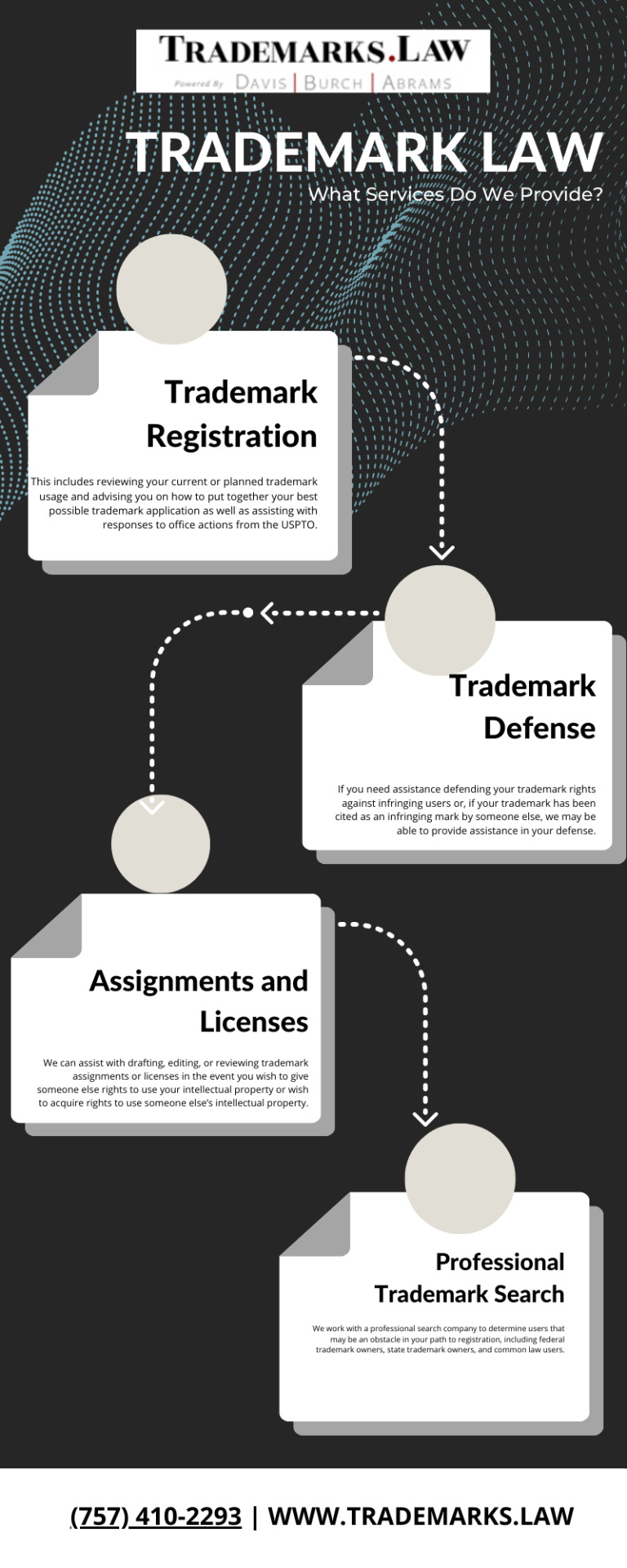
0 notes
Text
TTAB Opposition: Key Reasons Why Trademark Applications Get Challenged
When businesses and individuals file for trademark registration, their applications are carefully scrutinized not just by the United States Patent and Trademark Office (USPTO), but potentially by any third party who believes the registration may adversely affect them. This can lead to what is known as a trademark opposition, a formal dispute against the registration of the trademark. Such oppositions are handled by the Trademark Trial and Appeal Board (TTAB), an administrative tribunal of the USPTO.

1. Likelihood of Confusion
The most common ground for a trademark opposition is the likelihood of confusion with an already existing trademark. If an applied-for mark is too similar to another mark that is already registered or pending and covers related products or services, the TTAB may find a likelihood of confusion. Trademark Opposition Lawyers meticulously analyze prior marks and argue whether the similarities between the marks are likely to cause confusion among consumers.
2. Descriptiveness or Genericness
A trademark that is deemed merely descriptive or generic can also be a target for opposition. A descriptive mark describes a quality, characteristic, function, or feature of the goods or services and does not qualify for registration unless it has acquired distinctiveness through extensive use in commerce. Generic terms, which are the common names for products or services, cannot be trademarked at all. Attorneys specializing in trademark oppositions are skilled in presenting evidence about how a mark is perceived by the public.
3. Prior Rights (Common Law Rights)
Even if a trademark is not registered, prior common law rights can be grounds for opposition. Businesses that have been using a mark in commerce, even locally, may oppose a new application if they believe it infringes on their established rights. Trademark Opposition Attorneys often rely on demonstrating the extent and geographical reach of their client’s prior use to support their opposition.
4. Bad Faith
Bad faith applications are those where the applicant is suspected of knowingly applying for a trademark with the intent to cause confusion or to capitalize on the reputation of existing trademark holders. Establishing bad faith requires deep legal insights and strategic presentation of evidence, tasks that are typically handled by experienced Trademark Opposition Lawyers.
5. Nonuse
A trademark must be actively used in commerce to maintain its registration. If an opposition is filed on the grounds that a trademark has not been genuinely used, the applicant must provide proof of use, or the registration can be canceled. This is a critical area where Trademark Opposition Attorneys can either defend the existing use or challenge the purported use by the applicant.
6. Functionality
A mark that is deemed functional — meaning that the feature it represents is essential to the use or purpose of the product, or affects the cost or quality of the product — cannot be trademarked. Lawyers experienced in trademark oppositions can argue whether a mark's functionality truly disqualifies it from trademark protection.
The Role of Trademark Opposition Lawyers
Trademark Opposition Lawyers play a critical role in navigating the complex proceedings of the TTAB. Their expertise not only involves the submission of legal briefs and evidences but also strategic counseling to clients about the feasibility and potential outcomes of filing an opposition or defending against one.
Handling Oppositions and Cancellations
Trademark Oppositions / Cancellations are serious legal challenges that can determine the fate of a trademark. Whether advocating for the opposition or defending the application, a skilled Trademark Opposition Attorney can influence the outcome through compelling arguments, thorough research, and strategic use of legal precedents.
Conclusion: Reyes & Schroeder Associates
Navigating the complexities of trademark oppositions and cancellations requires legal expertise that only seasoned Trademark Opposition Attorneys can offer. Reyes & Schroeder Associates prides itself on providing top-tier legal counsel in the realm of trademark law. With a robust understanding of TTAB procedures and a commitment to safeguarding intellectual property rights, Reyes & Schroeder Associates ensures that your trademark endeavors are both protected and prosperous. Our team's strategic approach to handling trademark disputes embodies a blend of thorough legal knowledge and tactical prowess, aimed at delivering optimal outcomes for our clients. Trust Reyes & Schroeder Associates to guide you through the intricacies of trademark oppositions and secure your brand's future.
#Trademark Opposition Process#Trademark Law#Intellectual Property Rights#TTAB Procedures#Trademark Legal Defense
1 note
·
View note
Text
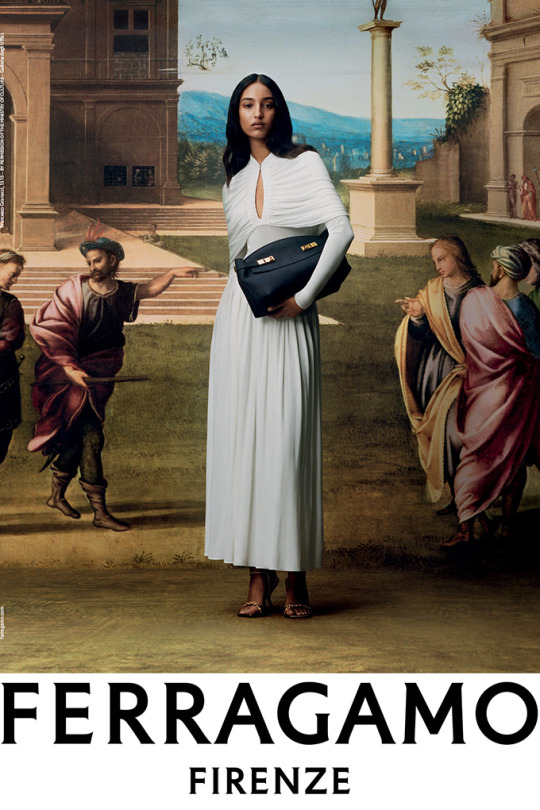
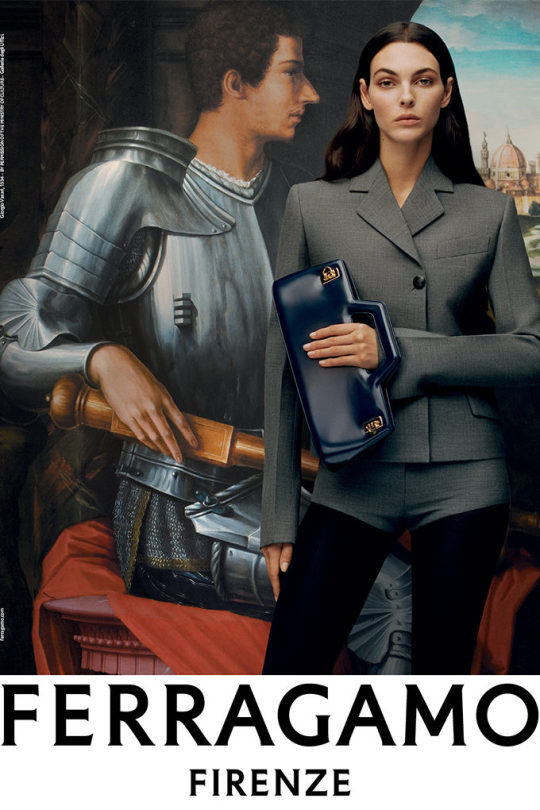
Can the aura of a cultural property affect fashion’s IP? What Ferragamo’s Fall/Winter ‘23 fashion campaign with the Uffizi might tell us…
As anyone who reads my Fashion by Felicia musings and other scholarship knows, I’m a bit Ferragamo obsessed. I can’t really pinpoint where my fascination with this Italian heritage brand started. I’m sure it’s lodged deep in my six year old self. It's somewhere in between walking around Florence to Gilli for a hot chocolate and spotting the windows of Palazzo Spini Feroni and observing aristocratic Florentine ladies of a certain age (immortalized in a Milanese version on sciuraglam) wearing their Vara shoes with a slightly adolescent bow that seemed to me to communicate that a six year old Italian-American girl from the Midwest now relocated to a new Renaissance context could really grow up to be that much of an elegant, sophisticated signora. But, no matter where this obsession began, suffice it to say that when I started to explore the links between fashion heritage and art history in my undergraduate studies, the Ferragamo Creations line and the Ferragamo Museum seemed to me the best place to start. Fast forward a decade, and the richness of the Ferragamo example, and its embrace of the multiple facets of its founder’s life and talent as part of its brand heritage, is still offering multi-faceted examples and case studies, from expired patents and exhibitions to gold sandals and Rainbow sandals reimagined from the archive and, now, a Fall/Winter ‘23 campaign at another treasured heritage space in Florence, the Uffizi.
Now, when you saw the announcement of Ferragamo’s campaign, you might have thought (like Cher in Moonstruck)- wait a minute! Didn’t the Uffizi just object to Gaultier’s use of The Birth of Venus? Wasn’t there some outrage at the idea of Chiara Ferragni posing in the Uffizi galleries just a few years ago? Why is Ferragamo a “yes” now but Gaultier was a “no”? From a purely technical, legal point of view, there is an answer.
The Uffizi is classified as a special autonomous museum which, while still a public cultural institution under the purview of the Italian Ministry of Culture, makes specific choices as part of its autonomy and mission to protect, manage, and enhance the cultural properties it holds in its collection. You can read more about the reform of Italian museums in 2014, the designation of certain museums as autonomous institutions, and their relationship to the Ministry of Culture’s General Directorate for Museums in Italy here. Part of the protection and enhancement (or valorization) of the cultural properties in the Uffizi collection includes preserving the tangible painting you see when you visit the Uffizi. It also includes deciding how to best use the intangible image of the painting. You also might think of this intangible image of the painting as the tangible composition that, thanks to photography and our iPhones, has become decidedly intangible. In other words, part of the Uffizi’s mandate includes managing the cultural interest that we attach to a painting that is a cultural property, like an oil on canvas by Giovanni Bellini (see a Ferragamo model in front of it here). This management includes protecting the very existence of the tangible painting, and also being sure that painting is properly valorized- that access, enjoyment, and education related to the unique cultural interest the painting has for us is properly supported and communicated.
Reproductions of cultural properties are part of this valorization conversation. Under Articles 107 and 108 of the Italian Code of Cultural Heritage Law, the Uffizi and the Ministry are allowed to authorize reproductions of the cultural properties in the Uffizi’s collection that are used for commercial purposes. Carved out of this “authorization” are uses related to freedom of expression. No need to worry if you are a considerate, mature American tourist just taking a picture for your personal Instagram (avoid carving love notes on the Colosseum!). Of course, in our personal branding times, what counts as commercial and non-commercial is a spectrum and not a bright line. What if you use your Instagram to promote tours you give or other creative projects, and not just as a travel diary for family and friends? That’s a current hot button issue. Suffice it to say that, for many Italian museums and by extension the Ministry of Culture, commercial use is an important weight on the scale in favor of authorization and, depending on the particular use, the payment of a fee. Many of the latest cases finding that commercial uses of images of cultural properties required authorization and the payment of a fee lean on the concept of public fruition as a justification. The museum, the argument goes, is entrusted with assuring a “qualified and complete process of knowledge of an object, of a reality that becomes a part and the heritage of the single and collective culture…” (Tribunale - Firenze, 11/04/2022, Rg. 1910-2022). The authorization process is the main vehicle for this assurance.
You might also think of this assurance as a quality control of the work of art/cultural property’s aura in an age of mechanical (and digital) reproduction, as so expertly introduced into our lexicon by Walter Benjamin. As John Henry Merryman said, we care about a cultural property’s ability to tell us “the truth”, to be authentic and to testify- that is essentially the essence of our public interest in cultural property and, more broadly, cultural heritage. The regulation of images of works of art that qualify as cultural properties under the law is essentially a control over the stories that cultural properties tell. Cultural institutions have an interest, in light of their mission, in supporting some stories over others. Of course, we can debate which stories and for which stakeholders and Merryman’s own conception of “truth”, especially in light of the importance of diversity for museum audiences, and the very relevance of certain museum missions today- here’s looking at you British Museum. The question of what that support looks like, and how far cultural dialogue should be stifled in the name of truth and authenticity, is a foundational one. Of course, one need only look at the Uffizi’s brilliant TikTok channel to see how open that particular cultural institution is to cultural dialogue, translating their cultural properties to new contexts, and embracing Gen Z for the benefit of culture.
So, short answer? Ferragamo asked for permission to use images of the cultural properties in the campaign and followed Italian cultural heritage law. Ferragamo’s proposed use was deemed in line with preserving and valorizing the cultural properties that would be featured in the campaign by the Uffizi. Gaultier seems to not have even asked for authorization, either as a first matter or after a cease and desist letter from the Uffizi. Hence the characterization of the use of the image of The Birth of Venus in a capsule Gaultier collection as illicit.
But assuring public fruition and the valorization of cultural property doesn’t always require giving a museum the right to check the use of an image of a painting and/or control its aura. Other museums, and other jurisdictions, take different pathways. This is part of the reason why Italy’s regulation of the reproductions of cultural properties has seemed to be like a mutant copyright to so many. In the United States, for example, we relegate images of paintings that have aged out of copyright law to a robust public domain. And this rule, following some contested museum and art database policies, has over time extended to many cultural institutions. A case in point: The Metropolitan Museum of Art and other museums embrace Open Access policies that allow commercial uses of the images of paintings in their collections. Of course, this doesn’t stop The Metropolitan Museum of Art from partnering with Pacsun- placing images of paintings on loungewear sold in their giftshop, partnering with creative teams to re-interpret the works in their collections in new designs, and leveraging their “THE MET” Logo to create consumer recognition on the fashion and retail market. And it is here that a cross-pollination of sorts begins to emerge between cultural heritage law, IP law (and by that I specifically refer to copyright law and trademark law), and their negative spaces. There is already an argument to be made under Italian cultural property law that some uses of images of cultural properties may be so creative that they are effectively kicked out of a cultural property licensing regime (for more on that argument see here and here). And the same creativity that removes certain uses from a cultural property licensing regime might be enough, in certain circumstances, for the spark of originality required to enter the copyright regime. But, to quote the great Whitney, how will we know? Is there a threshold for creativity and originality in fashion when fashion builds on cultural property and its aura?
In an insightful recently published article, Intellectual Property and the Manufacture of Aura, Bechtold and Sprigman coin a useful phrase with which to think about this question – “auratic narrative.” Auratic narratives are essentially a product of law, marketing, social norms, communities, and businesses and succeed where there are multiples. We might think of them as “invented heritage” (p. 348) but also as a storytelling that builds on facts and adds a healthy dose of mythmaking, creating brand heritage. Bechtold and Sprigman identify how auratic narratives may highlight a connection to an author (p. 306) (like Salvatore Ferragamo for Salvatore Ferragamo the brand), a place-narrative (p. 324) (like Florence, Italy for Salvatore Ferragamo the brand), and even originality narratives that focus on provenance (p. 330) (like blockchain mechanisms or an NFT with a Ferragamo sneaker that traces one of many shoes back to the brand). At times copyright law and trademark law (p. 323-324) may recognize auratic narratives. This has especially been evident in copyright law when certain jurisdictions have implemented “museum tests” (p. 310) or even deployed the use of “iconic” (as in the Moon Boots case in Italy, see p. 315 and here), connecting designs to specific authors and moments in history. In this sense, then, cultural strategies (p. 312) that involve cultural properties and partnerships with cultural institutions can be a key move for fashion brands and their designs. These strategies and partnerships create auratic narratives that buttress originality, support secondary meaning, or, at the very least, create a marketing campaign that makes a product unique and precious, the authentic original even if defined by copies.
And this brings us to the Fall/Winter ‘23 Ferragamo campaign. Photographed in front of works of art in the Uffizi collection, Maximilian Davis’ designs for Ferragamo are presented as indicative of a “New Renaissance.” With reference to the collaboration between the Uffizi, The Italian Ministry of Culture, and Ferragamo, you might have noted the credit “By permission of the Ministry of Culture- Gallerie degli Uffizi” as you scrolled through the Instagram captions. In Davis’ words, “The Renaissance is hardwired into Florence, and Florence is hardwired into Ferragamo. At this time of a new beginning at the house, it made perfect sense to reclaim the cradle of the Renaissance as our spiritual home, and to harness the deep, artistic spirit of this city to showcase the new collection.” Far from just placing models dressed in Ferragamo in front of works in the Uffizi galleries and its behind-the-scenes areas, some models seem to have been digitally placed inside the paintings, especially Francesco Granacci’s tempera on wood and Giovanni Bellini’s oil on canvas. Reclaiming the Renaissance includes painting Ferragamo in as a central character of these Renaissance compositions. In essence, laying claim to the aura of these paintings as part of Ferragamo’s own auratic narrative. Will adding in Renaissance layers to Ferragamo’s designs make us recognize Ferragamo’s designs as more Florentine than other luxury brands? Will this Florentine connection increase Ferragamo’s Made in Italy value on the market and, perhaps, make these 2023 designs more impactful in the history of design, so as to render them iconic or, in the future, indicative of a historically important “fus[ion] of beauty and innovation”? Time will tell but, as long as there is an aura for cultural property, and museums that participate in fashion’s origin stories, there may be an auratic narrative to buttress fashion’s IP rights.
Additional References
http://musei.beniculturali.it/wp-content/uploads/2018/04/Allegato_I-Livelli-uniformi-di-qualit%C3%A0-per-i-musei_English.pdf
http://musei.beniculturali.it/notizie/notifiche/sistema-museale-nazionale-pubblicato-il-decreto
Le Gallerie degli Uffizi initiatives between cultural heritage and copyright law, Presentation by Avv. Serena De Laurentiis, ALES S.p.A. and Gallerie degli Uffizi, June 2023
Lorenzo Casini, The Public/Private Dialectic in the Valorization of Cultural Heritage (forthcoming in The Italian Law of Cultural Heritage: A Dialogue with the United States, conference proceedings, Florence, Italy, June 2022)
Lorenzo Casini (2018) The long and winding road to the establishment of state-museums in Italy, Museum Management and Curatorship, 33:6, 546-554, DOI: 10.1080/09647775.2018.1537616
John Henry Merryman, The Public Interest in Cultural Property, 77 CAL. L. REV. 339 (1989)
Felicia Caponigri, Images of “Italian” Cultural Properties: Some Thoughts on the Italian Code of Cultural Heritage Law’s Articles 107 and 108 for an American Audience (forthcoming, The Italian Law of Cultural Heritage: A Dialogue with the United States, conference proceedings, Florence, Italy, June 2022)
Heymann, Laura A., Dialogues of Authenticity (July 29, 2013). 67 Stud. L. Pol. & Soc'y 25 (2015), William & Mary Law School Research Paper No. 09-247, Available at SSRN: https://ssrn.com/abstract=2302696
Images
https://www.ferragamo.com/shop/us/en
#salvatore ferragamo#cultural heritage law#IP law#fashion law#botticelli#cultural property#pac sun#the metropolitan museum of art#Made in Italy#aura#Walter Benjamin#Renaissance#New Renaissance#Copyright law#Trademark Law#auratic narrative
1 note
·
View note
Text
Earth, Wind & Fire Tribute Band Responds to Trademark Lawsuit: Claiming they Abandoned their name
Legaltrademarklawsuittribute band
A tribute band that was sued by Earth, Wind & Fire for trademark infringement is firing back with a bold counterargument: That the famed R&B act has actually abandoned any intellectual property rights to its name.
In a court filing on Wednesday (Aug. 30), the smaller band — which calls itself Earth Wind & Fire Legacy Reunion — argued that the original group had…

View On WordPress
#consumer updates#education#law#Legal#legal updates#parasitic relationships#Product recalls#trademark law
0 notes
Text
Trademark Drawings: Your Path to Intellectual Property Protection | The Patent Experts
Introduction to Trademark Drawings
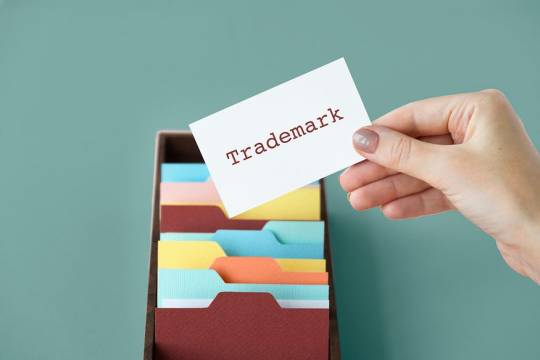
Why Trademark Drawings are Important
Trademark drawings are more than just aesthetic expressions; they are the physical manifestation of your brand’s identity. They have the ability to identify your goods or services in a crowded marketplace while also acting as legal barriers against unlawful use. Let’s take a closer look at why these designs are so important.
Creating Effective Trademark Drawings
Step 1: Understand Your Brand
Before you put pen to paper or pixels to screen, you must first have a thorough understanding of your brand. What are its guiding principles? What is its purpose? What distinguishes it? Your trademark artwork should be a visual representation of these critical elements.
Step 2: Sketch Your Ideas
Begin by engaging in the creative process. Begin with rudimentary sketches to visualize several design concepts. Experiment with different shapes, fonts, colors, and symbols until you find the perfect fit for your brand identity.
Step 3: Seek Professional Help
While some people have the artistic ability to develop their own trademark designs, it is often best to seek the advice of a professional graphic designer. A skilled designer can translate your vision into a polished and impactful design that complies with legal requirements.
Step 4: Review and Refine
Creating a trademark drawing is an iterative process. Review and update your design on a regular basis to ensure it is consistent with your brand’s identity and meets all legal standards. Seek feedback from peers or professionals to make further changes.
Step 5: Digitalize the Drawing
Once you have your finished design, you must transform it into a digital version that meets the special requirements for trademark registration. This step ensures that your design is legally protected.
Trademark Drawing Guidelines

Size: Trademark drawings are normally required to be of a certain size, which varies based on the trademark office’s criteria. These conditions are in place to ensure that the drawing is visible, easily recognizable, and may be reproduced in numerous media without loss of quality. It is critical to check the size specifications applicable to your jurisdiction to avoid rejection during the registration procedure.
Format: The format of a trademark design refers to the technical parameters and file type needed by the trademark office. JPEG, PNG, and vector formats such as AI and EPS are common. Using the correct format is critical since it ensures that the drawing can be quickly processed and duplicated for official documents, certificates, and publications.
Clarity: The criteria for trademark drawings is clarity. A well-drawn trademark is instantly identifiable and distinguishable from other marks. This involves the use of legible typefaces, sharp lines, and the avoidance of any components that could cause misunderstanding. Fuzzy or imprecise designs may be rejected because they may generate complications during the registration procedure or potential conflicts.
Consistency: Trademark illustrations should be consistent with the mark’s real use. This means that the illustration must accurately depict how the mark is utilized in trade. Any considerable differences from actual usage may result in the trademark application being rejected. Consistency protects the trademark’s integrity and avoids misuse.
Color and Black & White Versions: Color and black-and-white versions are required by several trademark offices if the mark is registered in color. This ensures that the trademark is protected no matter how it is portrayed. It is critical to adhere to the particular recommendations issued by the trademark office about color standards.
No Extraneous Matter: Extraneous content unrelated to the mark should be avoided in trademark illustrations. This includes background graphics, supplementary text, or aesthetic components that do not directly contribute to the depiction of the mark. The illustration should just depict the trademark.
No Watermarks or Copyright Symbols: Watermarks and copyright symbols should not be included in the trademark artwork. These components can obstruct the mark’s clarity and validity. Trademark drawings should show the mark exactly as it is used in commerce, with no additional indications.
Digital Submission: Most trademark offices now request digital submission of trademark drawings via their internet systems in the digital age. Check that your drawing complies with the technical criteria for online submission, such as file size constraints and resolution standards.
Following these trademark drawing standards increases the chances of a successful trademark registration process. Failure to follow these requirements may result in delays, rejections, or legal concerns. As a result, it’s critical to become acquainted with the precise instructions offered by your local trademark office or speak with a trademark attorney to ensure compliance and effectively protect your brand.
Trademark Registration Process
The Trademark Registration Process is a significant operation that contains numerous procedures and requirements for getting legal protection for your brand or product identification. Trademark drawings are vital in visually displaying your trademark during this process. Let’s look at how trademark drawings fit into the trademark registration procedure and how to use them effectively:
Preliminary Trademark Search: Before starting the registration procedure, it’s a good idea to complete a thorough trademark search to confirm that your intended trademark is distinctive and does not infringe on any existing trademarks. This step assists you in avoiding future confrontations.
Identify Your Trademark: Define the trademark you want to register. This includes deciding on the words, logos, or symbols that will symbolize your company. Trademark drawings are used when your trademark incorporates a graphical feature, logo, or design.
Create or Refine Your Trademark Drawing: If your trademark involves a graphical component, you must design or refine the trademark drawing. This graphic should depict how you propose to use the mark in commerce. Follow the trademark drawing rules to ensure clarity, uniformity, and size and format criteria are met.
Complete the Trademark Application: The following step is to fill out the trademark application form provided by the relevant trademark office. This application contains information about your trademark, how it is used, and who owns it. You will normally include a depiction of your trademark in your application, which is where your trademark drawing comes into play.
Trademark Classes: Indicate the types of goods or services you plan to use the trademark for. Trademark classes classify various sorts of products and services. To achieve comprehensive protection, it is critical to precisely identify the classes relevant to your organization.
Submit the Application: Submit your completed trademark application to the appropriate trademark office, together with the necessary payments. At this point, the trademark drawing acts as a visual representation of your mark and is submitted with your application.
Examination and Review: The trademark office will review your application, including the trademark drawing, to confirm that it meets all standards. This investigation will ensure that your mark is distinct, not confusingly similar to existing trademarks, and fits all technical standards.
Publication and Opposition Period: If your application passes the evaluation, it is usually made public via a database. During this time, other parties may object to your trademark registration if they believe it is in contradiction with their own trademarks.
Trademark Registration: If no oppositions are filed or if any are resolved in your favor, your trademark will be registered. At this stage, your trademark drawing is incorporated into the official registration record.
Maintenance and Renewal: Trademark registration is not a one-time event; it requires ongoing maintenance and renewal to remain in force. Continue to use your trademark in commerce and renew it as necessary by the trademark office.
By correctly incorporating your trademark drawing into the registration procedure, you can ensure that your brand obtains the legal protection it deserves. A well-prepared and conforming trademark drawing increases the likelihood of registration success. However, it is critical to engage with trademark professionals or attorneys who are aware of the specific criteria in your area in order to manage the registration process successfully and protect your brand comprehensively.
Protecting Your Brand with Trademarks
Trademark registration gives more than simply visual benefits; it also provides strong legal protection for your brand. Learn why actively defending your trademark rights is critical to protecting your intellectual property in the marketplace.
Trademark Laws and Legal Drawings
Investigate the relationship between trademark laws and the creation of legal drawings. Understand the important legal restrictions that apply to trademark designs in order to ensure that your design conforms with the law and maximizes its protection potential.
Trademark Symbols and Usage
Incorporating trademark insignia into your drawing effectively is critical. They not only provide legal heft to your brand protection efforts, but they also convey ownership. Learn about the correct use and legal ramifications of trademark symbols.
Trademark Drawing Services
Creating trademark designs can be a difficult task, particularly for people with minimal design talents. If you prefer a more hands-on approach or require expert advice, consider hiring professional graphic designers or trademark experts. They can be of great support during the procedure.
Conclusion
To summarize, trademark designs are far more than just decorative features; they represent the foundation of legal protection for your brand or goods. By following the techniques given in this book and knowing the legal elements, you may develop effective trademark drawings that protect your intellectual property and distinguish your business in the marketplace. Embrace the power of trademark drawings to protect and enrich your brand’s identity.
Ready to Safeguard Your Intellectual Property?
If you’re seeking expert guidance on patenting, trademark registration, or protecting your intellectual property, look no further. The Patent Experts are here to help you navigate the intricate world of intellectual property rights.
Why Choose Us?
Experience: With years of experience in intellectual property law, we’ve helped numerous clients secure their innovations and trademarks.
Expertise: Our team of dedicated experts understands the nuances of patenting and trademark registration, ensuring you receive accurate and effective guidance.
Comprehensive Services: From patent searches to trademark drawings, we offer a wide range of services tailored to your needs.
Legal Insights: Stay informed about the latest developments in patent and trademark laws with our up-to-date legal insights.
Personalized Support: We’re committed to providing you with personalized support every step of the way.
Take the Next Step to Protect Your Ideas and Brands.
Visit The Patent Experts today to explore our services, get in touch with our team, and safeguard your intellectual property for a brighter future. Don’t let your innovations go unprotected — trust the experts who understand the value of your ideas.
#TrademarkDrawings #TrademarkRegistration #IntellectualProperty #TrademarkDesign #TrademarkSymbol #TrademarApplication #LegalDrawings #TrademarkProtection #TrademarkRequirements #Trademark Law
#Trademark Drawings#Trademark Registration#Intellectual Property#Trademark Design. Trademark Symbol#Trademark Application#Legal Drawings#Trademark Protection#Trademark Requirements#Trademark Law#artists on tumblr
0 notes
Text
Balancing the First Amendment on Whiskey and Dog Toys
The United States Supreme Court has weighed First Amendment rights in the balance against many things: privacy, national security, the desire to protect children from hearing a bad word on the radio, to name a few. Now the Court will need to balance them against trademark interests. The Court heard oral arguments in Jack Daniel’s Props. v. VIP Prods., No. 22-148, on March 22, 2023.
I’ve written…
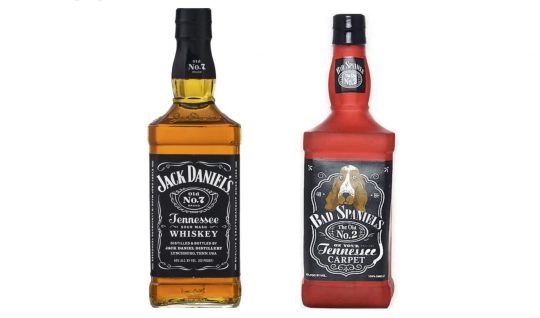
View On WordPress
0 notes
Link
A trademark is a right that is granted for a letter, number, word, phrase, sound, smell, shape, logo, picture and/or aspect of packaging.
0 notes
Text
Today in my trademarks class, I learned that you can legally steal a person’s trademark if:
1) the trademark isn’t registered in your home country, nor does the company that it was stolen from do business there
2) the mark isn’t popular enough that it’d be recognized worldwide (for example, ain’t no one registering MARVEL unless they want to be sued to death)
Literally, we studied a case where an American guy stole the trademark to a Japanese company and got away with it since the Japanese company didn’t have their mark registered in America. My professor even used the term “trademark pirates” for this.
So to anyone who is thinking of registering a trademark, be warned.
#personal life#posts about me#posts about my life#law school#student life#trademark#trademark law#law school student
4 notes
·
View notes
Text


Last week I received a cease and desist letter, claiming that my F*CK THE LAPD design was in violation of LAPD intellectual property. A few days later my lawyer sent this letter, seen here in its entirety.
2K notes
·
View notes
Text
Protect Your Brand with Professional Trademark Registration Services!
Trademark registration services are essential for any business that wants to protect their brand name or logo from being used by unauthorized parties. Registering your trademark gives you exclusive rights to use it in connection with your products or services and prevents others from using it without your permission. It is a crucial step in establishing brand recognition and credibility among consumers while protecting your business from potential legal issues.

While it is possible to file a trademark registration on your own, it is a complicated and time-consuming process that requires a thorough understanding of trademark law. Hiring a professional trademark attorney ensures that your application is properly prepared and filed, and any potential legal issues are addressed in a timely and effective manner.
The process of trademark registration services typically involves conducting a trademark search, preparing and filing the application, responding to objections or oppositions, and obtaining your trademark registration. A professional trademark attorney can help you navigate this process to ensure that your trademark registration is done correctly.
When choosing a trademark registration service provider, it is important to choose a reputable and experienced attorney who specializes in trademark law. Look for a provider with a proven track record of success and a high level of customer satisfaction. Additionally, consider the cost of the service and ensure that it fits within your budget.
In conclusion, trademark registration services are essential for protecting your business and establishing brand recognition among consumers. Working with a professional trademark attorney ensures that your trademark registration is done correctly, protecting your brand for years to come. Choose a reputable and experienced service provider to ensure that your trademark is properly protected and to avoid any potential legal issues down the line.
0 notes
Photo

OK Go: cereal giant and indie rockers in legal battle over name the band had first
I will go on record and say that I think OK Go is an incredibly underrated band. Sure, everyone talks up their fancy music videos — which are certainly great! But we don't talk enough about that band's songwriting and musicianship, the way they marry a garage-y post-punk sound with unconventional rhythms filtered through a Prince-like pop lens. — Read the rest
https://boingboing.net/2023/01/27/ok-go-cereal-giant-and-indie-rockers-in-legal-battle-over-name-the-band-had-first.html
#Post#Breakfast cereal#cereal#cereal killers#For cereal#ok go#post cereal#trademark#trademark infringement is your best entertainment dollar#Trademark law#Trademark Thuggery#trademarks#Thom Dunn#Boing Boing
0 notes
Text
Empowering Social Media Influencers - Trademarks Law
As a social media influencer, your personal brand is your most valuable asset. Davis Law understands the unique challenges you face and offers specialized Trademark Law services to protect your online presence. Stay ahead of the curve with our expert guidance tailored to influencers like you.
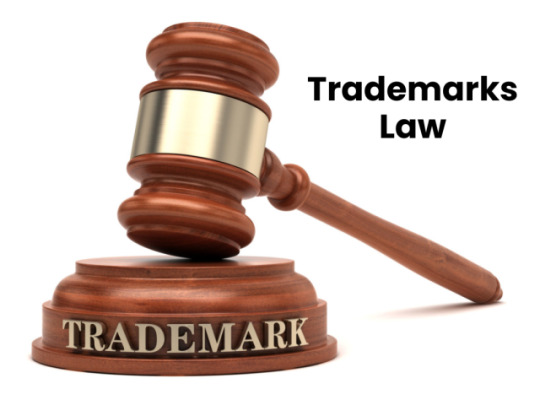
0 notes